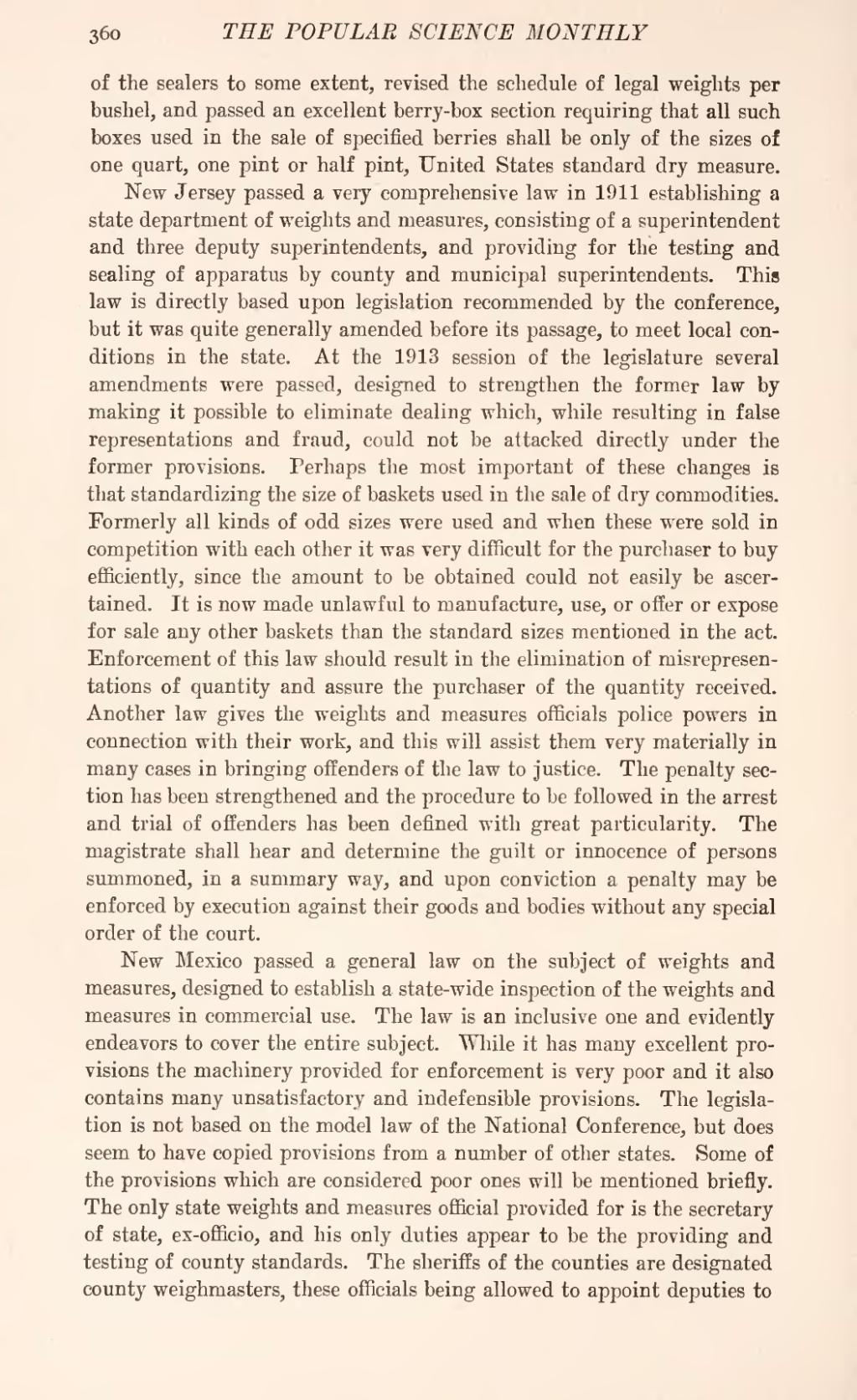of the sealers to some extent, revised the schedule of legal weights per bushel, and passed an excellent berry-box section requiring that all such boxes used in the sale of specified berries shall be only of the sizes of one quart, one pint or half pint, United States standard dry measure.
New Jersey passed a very comprehensive law in 1911 establishing a state department of weights and measures, consisting of a superintendent and three deputy superintendents, and providing for the testing and sealing of apparatus by county and municipal superintendents. This law is directly based upon legislation recommended by the conference, but it was quite generally amended before its passage, to meet local conditions in the state. At the 1913 session of the legislature several amendments were passed, designed to strengthen the former law by making it possible to eliminate dealing which, while resulting in false representations and fraud, could not be attacked directly under the former provisions. Perhaps the most important of these changes is that standardizing the size of baskets used in the sale of dry commodities. Formerly all kinds of odd sizes were used and when these were sold in competition with each other it was very difficult for the purchaser to buy efficiently, since the amount to be obtained could not easily be ascertained. It is now made unlawful to manufacture, use, or offer or expose for sale any other baskets than the standard sizes mentioned in the act. Enforcement of this law should result in the elimination of misrepresentations of quantity and assure the purchaser of the quantity received. Another law gives the weights and measures officials police powers in connection with their work, and this will assist them very materially in many cases in bringing offenders of the law to justice. The penalty section has been strengthened and the procedure to be followed in the arrest and trial of offenders has been defined with great particularity. The magistrate shall hear and determine the guilt or innocence of persons summoned, in a summary way, and upon conviction a penalty may be enforced by execution against their goods and bodies without any special order of the court.
New Mexico passed a general law on the subject of weights and measures, designed to establish a state-wide inspection of the weights and measures in commercial use. The law is an inclusive one and evidently endeavors to cover the entire subject. While it has many excellent provisions the machinery provided for enforcement is very poor and it also contains many unsatisfactory and indefensible provisions. The legislation is not based on the model law of the National Conference, but does seem to have copied provisions from a number of other states. Some of the provisions which are considered poor ones will be mentioned briefly. The only state weights and measures official provided for is the secretary of state, ex-officio, and his only duties appear to be the providing and testing of county standards. The sheriffs of the counties are designated county weighmasters, these officials being allowed to appoint deputies to
